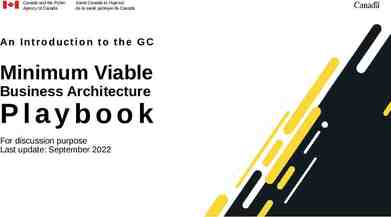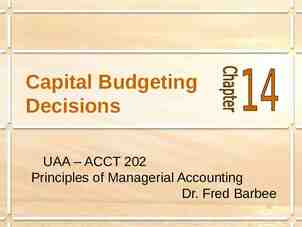Database Processing: Fundamentals, Design, and Implementation Chapter
44 Slides5.36 MB
Database Processing: Fundamentals, Design, and Implementation Chapter One: Introduction
Chapter Objectives To understand the importance of databases in Internet Web applications and smartphone apps To understand the nature and characteristics of databases To survey some important and interesting database applications To gain a general understanding of tables and relationships To describe the components of a Microsoft Access database system and explain the functions they perform To describe the components of an enterprise-class database system and explain the functions they perform 1-2
Chapter Objectives To define the term database management system (DBMS) and describe the functions of a DBMS To define the term database and describe what is contained within the database To define the term metadata and provide examples of metadata To define and understand database design from existing data To define and understand database design as new systems development To define and understand database design in database redesign 1-3
Chapter Objectives To understand the history and development of database processing 1-4
The Internet and Mobile Device World Client-Server Architecture 1-5
Databases in the Internet and Mobile Device World Databases are important because they are everywhere and are used daily: – Facebook Posts Likes – Twitter Tweets – Online shopping Amazon.com 1-6
How Did We Get Here? The Internet World I Personal Computers – 1977: Apple II – 1981: IBM PC Local Area Networks – Ethernet networking technology Early 1970s: Xerox Palo Alto Research Center 1893: US National Standard 1-7
How Did We Get Here? The Internet World II The Internet – 1969: ARPANET World Wide Web (WWW) – 1993: First Web browser (Netscape) available – Mid 1990’s: Online retail sites 1995: Amazon.com Early 2000’s: Web 2.0 1-8
How Did We Get Here? The Smartphone World Mid 1970s: Mobile Phone (Cell Phone) Smartphone – 2007: Apple iPhone – 2008: Google Android Operating System Tablets – 2010: Apple iPad Apps KROENKE AND AUER - DATABASE PROCESSING, 14th Edition 2016 Pearson Education, Inc. 1-9
The Characteristics of Databases The purpose of a database is to help people track things of interest to them. Data is stored in tables, which have rows and columns like a spreadsheet. A database may have multiple tables, where each table stores data about a different thing. Each row in a table stores data about an occurrence or instance of the thing of interest. A database stores data and relationships. KROENKE AND AUER - DATABASE PROCESSING, 14th Edition 2016 Pearson Education, Inc. 1-10
Data in Tables 1-11
The Key Characteristic of Databases: Related Tables A Composite Key is a primary key that consists of 2 or more attributes that uniquely identify an entity occurrence. 1-12
Microsoft Access 2013 Tables and Relationships 1-13
Naming Conventions in this Textbook Table names are written with all capital letters: – STUDENT, CLASS, GRADE, COURSE INFO Column names are written with an initial capital letter, and compound names are written with a capital letter on each word: – Term, Section, ClassNumber, StudentName 1-14
Databases Create Information Data recorded facts and figures Information knowledge derived from data Databases record data, but they do so in such a way that we can produce information from the data. – The data on STUDENTs, CLASSes, and GRADEs could produce information about each student’s GPA. 1-15
Database Examples 1-16
Components of a Database System 1-17
Applications, the DBMS, and SQL Applications are the computer programs that users work with. The Database Management System (DBMS) creates, processes, and administers databases. Structured Query Language (SQL) is an internationally recognized standard database language that is used by all commercial DBMSs. 1-18
Database Applications 1-19
Database Applications—Forms 1-20
Database Applications—Queries SELECT FROM WHERE LastName, FirstName, EmailAddress STUDENT StudentNumber 2; 1-21
Database—Reports 1-22
The DBMS 1-23
The Database A database is a self-describing collection of integrated tables. The tables are called integrated because they store data about the relationships between the rows of data. A database is called self-describing because it stores a description of itself. Metadata - data about data. 1-24
Typical Metadata Tables 1-25
Database Contents 1-26
Personal Database Systems: Microsoft Access At the time of this book’s publishing Access 2013 was the latest version, now 2016, may be a few inconsistencies with the text. 1-27
Microsoft Access Microsoft Access is a low-end product intended for individual users and small workgroups. Microsoft Access tries to hide much of the underlying database technology from the user. A good strategy for beginners, but not for database professionals. (missing some parts & PC based) NOTE: Microsoft Access 2013 (2010) is discussed in detail in Appendix A. 2016 should be about the same 1-28
Microsoft Access Microsoft Access is a DBMS plus an application generator: – The DBMS creates, processes, and administers Microsoft Access databases. – The application generator includes query, form, and report components. The Microsoft Access DBMS engine is called the Access Data Engine (ADE). Microsoft Access 2000 thru 2016 can be used as an application generator for the Microsoft SQL Server DBMS. 1-29
Enterprise-Class Database Systems 1-30
Prominent DBMS Products Microsoft Access 2016 Microsoft SQL Server 2014 – Microsoft SQL Server 2014 Express Oracle Corporation Oracle Database 12c – Oracle Database Express Edition 11g Releas e2 MySQL 5.6 IBM DB2 1-31
DBMS Power vs. Ease of Use Features and Functions Larger data sets Multiuser control Backup & recovery 1-32
Operating System (OS) Microsoft Windows – – – – Microsoft Access 2016 Microsoft SQL Server 2017 Oracle Database MySQL 5.7 Linux – Oracle Database – MySQL Apple OS X – MySQL 5.7 1-33
Three Types of Database Design 1-34
Database Design from Existing Data 1-35
Data Import: One or Two Tables? This is an important decision, and based on a set of rules known as normalization (which is covered in Chapter 3). 1-36
Database Design from New Systems Development Entity-Relationship data modeling is covered in Chapter 5, and data model transformations to database designs are covered in Chapter 6. 1-37
Database Design from Database Redesign Database redesign is covered in Chapter 8, after coverage of SQL in Chapter 7. 1-38
What You Need To Learn 1-39
Knowledge Priorities 1-40
A Brief History of Database Processing 1-41
The Relational Database Model The dominant database model is the relational database model—all current major DBMS products are based on it. It was created by IBM engineer E. F. Codd in 1970. It was based on mathematics called relational algebra. This course focuses on the relational database model. 1-42
The NoSQL Movement and Big Data Recent developments in Internet and mobile computing have resulted in the development of non-relational DBMSs. – NoSQL movement – Big Data These do not replace the relational model, but rather complement it. These topics are discussed in Chapter 12 and Appendix K. 1-43
1-44

















































